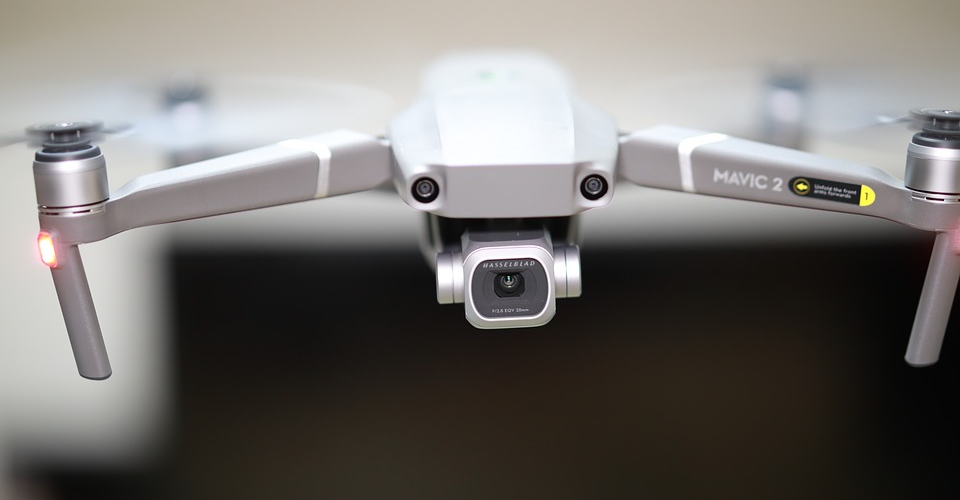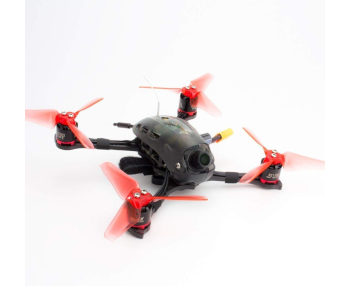5 Best Drones of 2019
Drones have become one of the most popular tech gadgets in the world. These, often pricey machines are not only fun to play with, but also very useful for certain careers, as they have introduced a whole new dimension to photography and cinematography, as well as a professional racing league.
In this guide, we will be taking a look at the best drones currently available. Our list isn’t specific to any particular discipline, but we have made sure to include at least one product for each of the main drone categories that currently exist. All of the models below are also ready-to-fly straight out of the box, meaning minimal setup time is required.
| Budget |
|---|
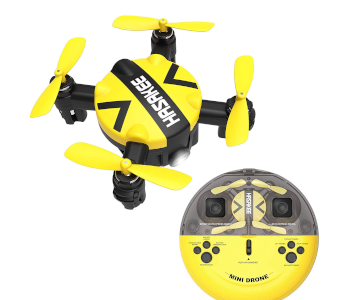 |
| K5 Mini Nano Drone |
| 4.5/5.0 |
| Body: plastic |
| Battery Life: Up to 8 minutes |
| This is low cost and easy-to-use. |
| Check Amazon |
| Best Value |
|---|
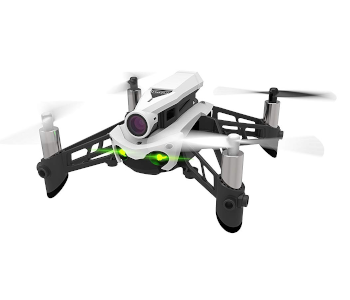 |
| Parrot Mambo FPV |
| 4.6/5.0 |
| Body: plastic |
| Battery Life: Up to 10 minutes |
| It’s packed with features and highly versatile. |
| Check Amazon |
| Top Pick |
|---|
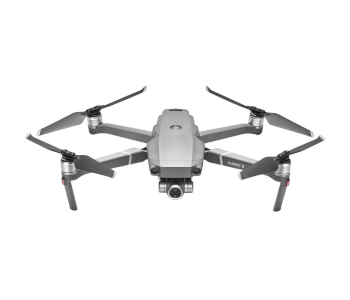 |
| DJI Mavic 2 Pro |
| 4.9/5.0 |
| Body: plastic |
| Battery Life: Up to 31 minutes |
| Excellent design, great camera features. |
| Check Amazon |
Top Drones Comparison Table
| Make and Model | Type | Size | Construction | Features | Battery Life | Price |
|---|---|---|---|---|---|---|
| EMAX BabyHawk Race | Racing Drone | Frame: 136mm Propellers: 3 inches | Body: plastic Frame: carbon fiber | High-speed power system, customizable shell canopy, Micro CCD sensor camera, optimized flight performance | Up to 8 minutes | Check Price |
| Parrot Mambo FPV | Leisure Drone | Frame: 180mm with bumpers Propellers: 2.5 inches | Body: plastic Frame: reinforced plastic | Multiple flying modes, FPV camera, FPV goggles, Parrot Fly pad, Facebook & YouTube Live | Up to 10 minutes | Check Price |
| DJI Mavic 2 Pro | Cinematography Drone | Frame: 322mm Propellers: 8.7 inches | Body: plastic Frame: aluminum | Flight barriers, gimbal protector, remote controller, 20MP Hasselblad camera, internal storage, SD card slot, omnidirectional obstacle control, 3-axis gimbal | Up to 31 minutes | Check Price |
| K5 Mini Nano Drone | Nano Drone | Frame: 61mm | Body: plastic Frame: plastic | Altitude hold, headless mode, return button | Up to 8 minutes | Check Price |
| DJI Inspire 2 | Cinematography Drone | Frame: 427mm Propellers: 9.4 inches | Body: magnesium Frame: carbon fiber | Multiple camera options, 30m obstacle detection, multiple modes, real-time route mapping, gimbal damper, SD card slot, dual batteries | Up to 27 minutes | Check Price |
1. EMAX BabyHawk Race
Editor’s Rating: 4.8/5
The EMAX BabyHawk Race is a racing drone designed by professionals, for professionals. The drone is a considerable upgrade from the standard BabyHawk and thanks to its impressive speeds and handling; it’s an absolute joy to fly.
Design
The BabyHawk Race has a sleek, aerodynamic design, which leaves very little room for flashy detailing or gimmicks. This gives the drone a rather imposing appearance, which is typical of a racing drone.
The internals of the drone are protected by a plastic canopy, which should provide enough durability to withstand most impacts. The canopy is also notably lightweight, allowing the device to fly faster and for longer. The canopy is also removable, giving you quick access to the components inside.
The frame is made from carbon fiber, which is strong, ultra-lightweight material used on most professional racing drones. The chances of it becoming damaged are, therefore, very slim, meaning you can fly the drone confidently, without needing to worry too much about it getting damaged.
The frame also comes with removable arms allowing you to switch them out for either longer or shorter options, depending on the model you initially buy. This is a great option to have, but it does add around 10 grams of extra weight to the drone, due to the extra screws needed to attach the arms to the body of the frame.
The drone measures 136mm across, making it rather compact, even for a racing drone. This means the 3-inch propellers should provide plenty of thrust, and their triple-blade design should have no issues cutting through the air. Maneuverability also shouldn’t be an issue, except maybe in windy conditions.
One thing the drone has been criticized for in terms of design is the fact the capacitor sticks out from the back of the quadcopter, which could leave it vulnerable to damage. This is a reasonable concern to have, but due to its positioning relative to the frame and propellers, the chances of it encountering a major impact are unlikely.
Features
The BabyHawk Race doesn’t come with a lot of impressive software features, but the components it uses are very high-quality, which is great to see considering its price tag. The drone also comes with a customizable canopy, which adds an element of personalization that we haven’t seen on the other drones in this guide.
The motors on the drone are EMAX branded RS1106 motors. For those of you who don’t know, 1106 refers to the size of the motor, meaning they measure 11mm in width and 6mm in height. The motors are also brushless, meaning they generate no friction and produce less heat than a brushed alternative.
Inside the drone is a triple stack containing the ESC (Electronic Speed Controller), the Flight Controller, and the VTX. The ESC is also a 4-in-1 stack, meaning it doesn’t need an Electronic Speed Controller for each motor.
The Flight Controller runs Betaflight, which is a reliable firmware used to fly both quadcopters and fixed-wing aircraft. The Flight Controller also comes with an on-screen display, meaning you can view important information directly on the FPV goggles during your flight.
The drone also comes equipped with a Foxeer Arrow camera, which features a 2.1mm lens and a CCD sensor. This is great to see, as CCD sensors provide higher contrast levels than CMOS sensors, which is very beneficial when used for FPV. CCD sensors do consume more power than CMOS sensors though, so you might want to swap the camera unit for something else if battery life is important to you.
Battery life
The BabyHawk Race has a flight time of up to 8 minutes, which is pretty reasonable for a racing drone. If you are unhappy with the battery life, you can also swap the battery out for something else, thanks to the level of customizability this drone offers you.
If you are looking to get into drone racing, or you are simply interested in racing drones, this is a great option to consider. This is by no means a beginner drone, but its compact size makes it easy to handle even at high speeds. On top of this, the drone also commands a very reasonable price tag, offering you a relatively low-cost route into the drone racing space.
| Tech Specs |
|---|
| Size: Frame: 136mm Propellers: 3 inches |
| Construction: Body: plastic Frame: carbon fiber |
| Features: High-speed power system, customizable shell canopy, Micro CCD sensor camera, optimized flight performance |
| Battery life: Up to 8 minutes |
| The Pros |
|---|
| Compact |
| Easily Portable |
| Lightweight |
| Durable |
| Great handling features |
| Adjustable camera |
| Decent flight time |
| The Cons |
|---|
| Not as feature-rich as some custom racing drones |
| Lower than some of the other options in this guide |
2. Best Value: Parrot Mambo FPV
Editor’s Rating: 4.6/5
The Parrot Mambo has been around for quite a while now and has always been considered an excellent entry-level leisure drone. Its no surprise, therefore, to see it make this list, especially considering a new FPV version has recently been released.
Design
In terms of design, the new Mambo is very much the same as the original version. This means it still features the same LED eyes that give it so much character, as well as the classic white shell it is recognized for. This toy-like aesthetic won’t appeal to everyone, especially considering the drones price tag, but it is nice to see a high-quality drone such as this target a slightly different demographic.
The shell is made from plastic, as are the propellers. This leaves both of them somewhat prone to damage, although the inclusion of bumpers should help to prevent damage in most cases. The frame is also made from plastic, however, it uses a reinforced compound instead, which will provide an extra dimension of durability.
The drone is also notable small, measuring just 180mm across when the bumpers are attached. This means you can easily launch the Mambo from the palm of your hand, making take-offs and landings quick and easy.
The new FPV camera unit has been styled in much the same way as the rest of the Mambo, meaning it fits seamlessly on top of the drone without looking out of place. The Goggles, however, look like a standard set of VR goggles you might get for your smartphone. This isn’t the end of the world, but it would have been nice if Parrot had put a little more effort into their appearance.
The goggles are collapsible though, which is a nice touch, as it makes them easily portable. They are also very comfortable to wear and can fit over the top of prescription glasses, meaning they can’t really be faulted from a functionality perspective.
Features
As this drone is intended for both beginners, as well as drone enthusiasts, Parrot has made sure to include a number of features to aid you when it comes to flying. For starters, the drone comes with multiple flight modes, including Easy mode, Drift mode, and Racing mode.
Easy mode is essentially a low-power mode with a number of handling assists, which is perfect for beginners who have never flown a drone before. It is also a great mode for younger children.
The Drift mode turns off horizontal stabilization, allowing you to make tight turns. This mode is probably the least useful out of the three, but you might find yourself using it if you want a little more control over the device but don’t feel ready for the Racing mode.
The Racing mode essentially turns off the stabilization assists, giving you complete control over the drones speed and maneuverability. This mode is by far the most enjoyable of the three, but it does take some getting used to, especially if you’ve worked your way up through the other modes first.
The Mambo also comes with the ability to live share your flights to Facebook and YouTube via the drones accompanying mobile app. According to Parrot, the Mambo is currently the only mini drone offering this feature, making it an attractive option, especially if you plan to shoot a lot of FPV videos with your drone.
Battery life
The Mambo FPV has a flight time of up to 10 minutes, which is pretty impressive considering the drone now has to carry a camera. It shows that Parrot has clearly made some upgrades to the Mambo in this department, which is good to see, considering how much more this version of the drone costs compared to the standard model.
If you are new to the world of drones, this product is a great option to start with. Not only does it offer a wide variety of features designed to help beginners, but it also includes a number of more advanced functions that will allow you to enjoy the device once you are a more experienced flyer. It isn’t a cheap device, but if you are willing to make the investment, you will be getting plenty of bang for your buck.
| Tech Specs |
|---|
| Size: Frame: 180mm with bumpers Propellers: 2.5 inches |
| Construction: Body: plastic Frame: reinforced plastic |
| Features: Multiple flying modes, FPV camera, FPV goggles, Parrot Fly pad, Facebook & YouTube Live |
| Battery life: Up to 10 minutes |
| The Pros |
|---|
| Compact |
| Easily Portable |
| Lightweight |
| Relatively durable |
| Excellent leisure features |
| Includes FPV goggles |
| Includes multiple flying modes |
| Decent flight time |
| The Cons |
|---|
| An aluminum frame would have been preferred |
| Lower than some of the other options in this guide |
3. Top Pick: DJI Mavic 2 Pro
Editor’s Rating: 4.9/5
The DJI Mavic 2 Pro is one of the most desired consumer drones on the market today. Widely regarded as the best folding drone available, the Mavic 2 Pro brings with it some significant upgrades over its predecessor, and it now sits as the go-to option for many content creators in this space.
Design
The Mavic 2 Pro looks much the same as the original Mavic. This means you still get the same premium design from before, with a high-quality aluminum frame and a sleek plastic shell. The foldable arms are also still present, meaning you can easily transport and store the device when not in use.
The camera unit and gimbal are attached to the underside of the drone and have been cleverly tucked into the body to reduce the likelihood of receiving damage from any drops or impacts. This is a nice touch from DJI, as on most other drones the camera unit is often attached in a way that makes it look like an afterthought, rather than a primary feature.
The battery pack sits at the back of the drone and comes with a quick-release mechanism, making it quick and easy to swap out for another one. This isn’t the most exciting design feature, but from a functionality perspective, it is an excellent addition, especially in terms of convenience.
The new model is slightly larger than the original, measuring 322mm across when unfolded. This is rather large compared to a lot of the other drones in this guide. However, due to the Mavic’s ability to fold, it still shouldn’t cause any issues in terms of portability.
The controller is also foldable and comes with a built-in LCD panel for viewing flight information. It isn’t the most high-quality display you will ever see, but it works well enough when being viewed at a glance. The thumbsticks on the new controller can also be removed, reducing its profile even further.
Features
The Mavic 2 Pro is certainly one of the more feature-rich options in this guide, offering a variety of handling assists, as well as some excellent camera features. To fly the drone, you will also need to download the DJI Go app, which is available on both Android and iOS. The app works well enough for the most part, however, the Android version has received some criticism due to its unreliability at times.
The app works with DJI’s OcuSync technology to ensure you receive a high-quality feed from the drone throughout your flight. DJI has said this feed can work up to 8000 meters away. However, due to the laws in place, there is no legal way to test this right now, so we’ll just have to take their word for it.
The Mavic 2 Pro also comes with an excellent obstacle avoidance system, which should greatly reduce the chances of the drone crashing into a tree or wall if you happen to lose control of it. As far as these systems go, we’ve yet to see one better than the one being utilized by the Mavic 2 Pro, as in certain flight modes the drone is pretty much impossible to crash.
In general, the Mavic 2 Pro is a joy to fly, and with speeds of up to 72kph, you shouldn’t have any issues with its performance. The drone is also incredibly agile, even in its standard P-mode, making it easy to position when capturing photos and videos. The new model is also notably quieter than the original, which is ideal if you are trying to capture more natural shots, as the drone is less likely to draw attention to itself in the air.
The camera on the Mavic 2 Pro comes from Hasselblad and features a 20MP CMOS sensor and adjustable aperture. This means it performs well in a variety of different lighting conditions, with the large 1-inch sensor doing well to reduce noise in low light, and the adjustable aperture reducing overexposure in bright light.
Video footage can be captured in a variety of different formats 1080p, 2.7k, and 4k. You also have a number of frame rates to choose from for each resolution including up to 120fps when capturing footage in full HD.
The drone also comes with a feature called ActiveTrack, which follows the subject in the cameras field of view, allowing you to focus on piloting the craft instead. This is a great feature to have, especially if you capture a lot of action footage, or are new to drone flying.
Battery life
The Mavic 2 Pro has a flight time of 31 minutes, which is a slight improvement over the 27-minute flight time being boasted by the previous model. Compared to most other drones, this is a seriously impressive feat, and the fact that DJI has managed to extend the flight time even further after increasing both the size and weight of the new model makes it even more remarkable.
This drone might be pricey, but it is arguably the option to go for if you are looking for a quadcopter that can do it all. Its design is both stylish and functional, its features are vast and refined, and its camera is simply leagues ahead of anything else at this price point. On top of this, the drone is also foldable, making it a great addition to any traveling content creators backpack.
| Tech Specs |
|---|
| Size: Frame: 322mm Propellers: 8.7 inches |
| Construction: Body: plastic Frame: aluminum |
| Features: Flight barriers, gimbal protector, remote controller, 20MP Hasselblad camera, internal storage, SD card slot, omnidirectional obstacle control, 3-axis gimbal |
| Battery life: Up to 31 minutes |
| The Pros |
|---|
| Foldable |
| Easily Portable |
| Lightweight |
| Durable |
| Excellent camera |
| Plenty of maneuverability features |
| Includes a number of safety features |
| Excellent flight time |
| The Cons |
|---|
| Not as customizable as some of the other options in this guide |
4. Best Budget: K5 Mini Nano Drone
Editor’s Rating: 4.5/5
The K5 Mini Nano Drone is one of the smallest quadcopters on the market, offering a cheap alternative to many of the more premium options on this list. Despite its compact form factor, however, the K5 is still a very competent flyer, which has caused its popularity to surge, especially with beginners and children.
Design
The drone has a fun and friendly appearance that somewhat resembles a bumblebee, due to its black and yellow color scheme. There is also a black and blue version available, which has a more conservative appeal.
Both the body and the frame on the K5 are made from ABS plastic, which should provide the drone with enough durability to survive most impacts. The arms on the drone are also foldable, giving them some give if they are ever subjected to a heavy crash. The foldable arms also allow you to store the drone inside the controller when not in use, making transportation even easier.
On the front of the drone is a built-in searchlight that is used to provide positioning assistance. This may seem like a rather redundant feature, but as the drone is more or less symmetrical, it makes sense to have some sort of reference point.
One design feature that is rather disappointing on the K5 is the fact that the battery is built into the drone, making it difficult to replace. The battery can still be replaced by taking apart the K5, but this is nowhere near as convenient as being able to quickly swap batteries on the fly via a quick release system.
The controller features a round, symmetrical design, much like the drone itself. However, this decision to follow a theme hasn’t really paid off as it gives the controller a rather cheap appearance. The circular form factor will also likely cause comfort issues after a while, due to the controller’s lack of ergonomic features.
Features
The K5 isn’t equipped with as many features as we would have liked to see, but it has enough functionality to keep things fun and entertaining. There are also plenty of beginner features to help you get started if you have never flown a drone before.
One of the coolest features on the drone is its ability to perform 360-degree flips at the push of a button. As you become a more proficient flyer, you will most likely want to learn how to perform these tricks manually, but it’s nice to have the option to perform them straight out of the box, especially if you want to impress your friends.
Another interesting feature on this drone is Headless mode. This feature switches the control orientation from the drone to the controller, allowing you to fly the K5 based on the direction you are pushing the lever in, rather than the way the drone is facing. This makes piloting the drone a lot easier if you are a beginner, but you will want to make sure to turn this feature off after a while in order to learn how to fly the drone properly.
There is also an Altitude mode on the drone, which works to keep the drone stable in the air by detecting and reacting to changes in air pressure. This is yet another feature that will really benefit beginners, as it reduces the chances of you crashing the drone by accident.
The K5 also comes with two main flight modes, which include a slower mode for beginners, and a full-speed mode for more experienced flyers. This is a pretty standard feature on most drones, but nonetheless, it’s good to see it being implemented on drones at lower price points.
Battery life
The K5 has a flight time of up to 8 minutes, which isn’t great compared to some of the other drones in this guide, but it makes sense, considering how small the battery is. Fortunately, however, the drone only takes 30 minutes to charge, and for added convenience, there is also a port inside the controller, allowing you to charge the drone even when it is stored away.
This is a great drone to consider if you are a beginner, as it has some of the best novice -inspired features available. Due to its small size, however, the drone isn’t well equipped for outdoor use, and for this reason, we have had to reduce its overall rating.
| Tech Specs |
|---|
| Size: Frame: 61mm |
| Construction: Body: plastic Frame: plastic |
| Features: Altitude hold, headless mode, return button |
| Battery life: Up to 8 minutes |
| The Pros |
|---|
| Compact |
| Smallest option in this guide |
| Easily portable |
| Lightweight |
| Relatively durable |
| Includes altitude hold for beginners |
| Includes a return button for automatic returns to the take-off location |
| Decent flight time |
| The Cons |
|---|
| No propeller dimensions available |
| An aluminum frame would have been preferred |
| The controller isn’t very ergonomic |
| Not as feature-rich as some of the other options in this guide |
5. DJI Inspire 2
Editor’s Rating: 4.8/5
When it comes to professional filmmaking, there is one quadcopter that stands out among the rest; the DJI Inspire 2. Offering some of the best camera equipment in the business, as well as excellent flight performance, this drone has become a popular option for cinematographers, which is no surprise considering the benefits it offers over some the competition.
Design
The Inspire 2 has a very premium design, featuring a magnesium shell and a carbon fiber frame. This means that despite the drones large form factor, it only weighs 7.5lbs, allowing it to fly easier and for longer. The lightweight construction also makes transporting the drone less of a hassle, which is ideal if you regularly move to different locations when filming projects.
In terms of durability, the Inspire 2 is incredibly solid, with the only real weak points being the plastic propellers and the camera unit. This will mean a potentially hefty payout if the camera unit ever gets damaged, but fortunately, the drone comes with a number of handling assists which should keep crashes to a minimum.
The quadcopter measures 427mm across, making it significantly larger than any of the other options in this guide. Despite this, however, the Inspire 2 is actually very reasonably sized for a professional drone, and it is actually one of the better options if you need to do a lot of traveling.
The drone doesn’t come with a camera attached to it, as DJI has designed the quadcopter to work with a variety of different options from the Zenmuse range. This means you have the flexibility to use a number of different lenses and focal lengths on your shoots, which is ideal if you often capture complex shots.
There is also a new FPV camera on the front of the drone, as well as an obstacle avoidance system, both of which are located just above the camera unit. From an appearance perspective, these additions don’t really add a whole lot to the drone, but they both add a new dimension to the device in terms of functionality.
Features
As mentioned, the Inspire 2 comes with a number of handling assists, but the most impressive of the lot is arguably the obstacle avoidance system, which can detect obstacles up to 30 meters ahead. There are also upward-facing infrared sensors which can detect obstacles up to 5 meters above the drone, as well as terrain detection sensors, which can be found on the bottom of the drone.
All in all, this makes the Inspire 2 a very difficult drone to crash. However, if you intend to make use of all of these features, you will need to put up with a reduced top speed of 72kph, rather than the full 93kph you get with these assists turned off.
Like the Mavic 2 Pro, the Inspire 2 requires a smartphone app in order to fly. However, you will need to make sure to download the DJI Go 4 app for this drone, rather than the standard DJI Go app used by most of the company’s other drones.
The app itself is packed with functionality, giving you the ability to calibrate the camera, switch between flight modes, and make use of the Spotlight Pro feature, which can be used to track moving objects. The app can even be used to view footage and make basic edits, making it a rather versatile piece of software compared to a lot of other drone apps.
The camera unit that ships with the drone is the Zenmuse X5S. It features a Micro Four Thirds system and a dynamic range of 12.8 stops, giving you increased color sensitivity, as well as improved signal to noise ratio compared to the older X5R. The new camera can also record in up to 5.2k, but the frame rate at this format is limited to 30fps.
Battery life
The Inspire 2 has a flight time of 27 minutes, which is slightly lower than the Mavic 2 Pro, but still highly impressive. The drone also comes with a twin battery configuration, meaning you can get even more flight time out of the device on your shoots, provided you are able to invest in spare batteries.
If you are a professional filmmaker, this is a superb option to go for. Its performance and handling are second to none in this guide, and its ability to work with multiple cameras allows you to have complete control over your shooting setup.
| Tech Specs |
|---|
| Size: Frame: 427mm Propellers: 9.4 inches |
| Construction: Body: magnesium Frame: carbon fiber |
| Features: Multiple camera options, 30m obstacle detection, multiple modes, real-time route mapping, gimbal damper, SD card slot, dual batteries |
| Battery life: Up to 27 minutes |
| The Pros |
|---|
| Well-sized for a professional drone |
| Lightweight |
| Highly Durable |
| Excellent camera options |
| Plenty of maneuverability features |
| Includes a number of safety features |
| Excellent flight time |
| The Cons |
|---|
| Larger than the other options in this guide |
Contents

